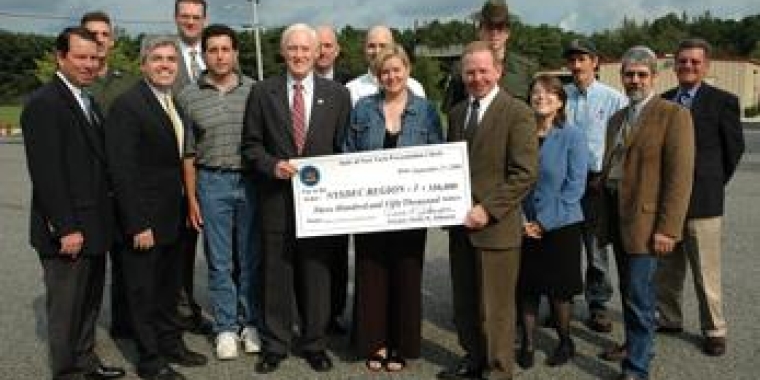
Legislature Passes Bill to Protect Seagrass
Owen H. Johnson
May 16, 2012
-
ISSUE:
- Environment
- Hunting and Fishing
LEGISLATURE PASSES BILL TO PROTECT SEAGRASS
Johnson-Sweeney Bill Helps To Address Threats to Ecosystem
The New York State Legislature has passed legislation to guard marine habitat and protect the continued viability of commercial and recreational fishing. The legislation, sponsored by Senator Owen Johnson (R-C, Babylon) and Assemblyman Bob Sweeney (D-I-WF, Lindenhurst), establishes the Seagrass Protection Act to address threats to these ecologically important species.
Seagrasses are a unique group of plants that have adapted to living submerged in coastal marine waters. These plants profoundly influence coastal environments by altering water flow, nutrient cycling, and food web structure. They are an important food source and provide critical habitat and nursery grounds for many animals including commercially, recreationally, and ecologically important fish.
“The passage of this legislation is great news for Long Island! Seagrasses are vital to the health of our bays, providing a habitat for many valuable species of fish and shellfish as well as stabilizing the bay bottom sediments,” Senator Owen H. Johnson said.
“The once vast seagrass meadows have suffered dramatic declines, making it essential that we take action now to protect the seagrasses in our coastal regions,” said Assemblyman Sweeney, Chairman of the Assembly Environmental Conservation Committee.
There is an urgent need for action. Seagrass beds used to be much larger - some estimates reaching as large as 200,000 acres in 1930. Today less than 21,803 acres remain.
Seagrass provides environmental benefits by increasing water column oxygen levels through photosynthesis. This is a particularly important function in protecting fish die-offs in areas prone to low oxygen levels during the warm summer months. Studies have also shown that the absorption of excess nitrogen and phosphorus by seagrass can reduce the frequency of nuisance algal blooms.
Protecting seagrass benefits the economy by providing important habitat to New York’s major commercial and recreational fisheries. The two largest shell fisheries in New York, the bay scallop and hard clam, seek protection in seagrass beds and studies have shown that blue crabs rely heavily on seagrass habitat for food, refuge and reproduction. Lobsters, Tautog (blackfish), fluke, striped bass and other marine species utilize seagrass.
The Seagrass Protection Act gives the state Department of Environmental Conservation the authority to develop management plans for coastal and marine activities which threaten seagrass beds and oversee seagrass restoration efforts.
Share this Article or Press Release
Newsroom
Go to NewsroomSenator Johnson Honors Nilda Alvarez Of Brentwood
October 5, 2006

Senator Johnson Honors Emmanuel Salazar Of West Islip
October 5, 2006


Senator Johnson Improves Edgewood Preserve
October 3, 2006
